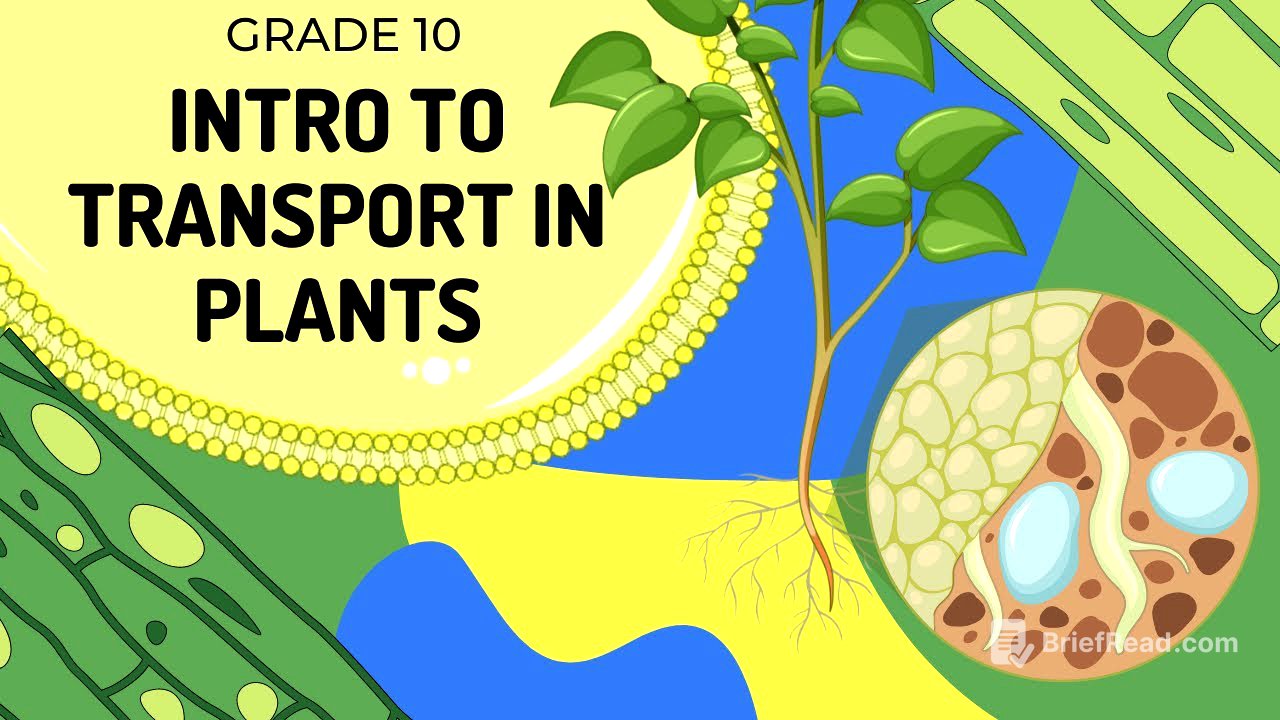TLDR;
This video provides an introduction to transport in plants, focusing on the adaptations of roots, particularly root hair cells, for water absorption. It explains how these cells create a water potential to facilitate osmosis and active transport of ions, ensuring a continuous flow of water from the soil into the plant. The video also touches on the role of the casparian strip in directing water into the xylem for upward transport. Key points include the importance of root hair cell adaptations, the creation of water potential through ion movement, and the function of the casparian strip.
- Root hair cells have unique adaptations for efficient water absorption.
- Water potential is created through the active transport of ions.
- The casparian strip ensures water enters the xylem.
Adaptations of Root Hair Cells [0:49]
The video begins by examining the adaptations of root hair cells, which are microscopic outgrowths on the roots of plants. These cells are crucial for water absorption from the soil. Unlike other epidermal cells, root hair cells lack a cuticle, which is a waxy, waterproof layer. This absence is essential because the primary function of root hair cells is to absorb water, and a waterproof layer would hinder this process. The elongated, finger-like projections of root hair cells significantly increase the surface area available for water absorption, making the process more efficient.
Increasing Surface Area and Water Storage [3:04]
The structure of root hair cells is specifically adapted to maximise water uptake. The long, elongated shape of these cells allows them to penetrate between soil particles, accessing water that might otherwise be unreachable. Additionally, root hair cells contain a large vacuole that occupies most of the cell's volume. This large vacuole stores significant amounts of water and helps create a water potential, facilitating the passive movement of water into the cell via osmosis. Root hair cells also have a high concentration of mitochondria to provide energy for active transport.
Creating Water Potential [5:41]
The video explains the concept of water potential, which is crucial for understanding how plants absorb water. A high water potential indicates a high concentration of water and a low concentration of ions (salts), while a low water potential indicates the opposite. Water moves from an area of high water potential to an area of low water potential via osmosis. Plants create and maintain this water potential gradient to ensure continuous water absorption, even in arid conditions.
Active Transport and Ion Movement [7:45]
To maintain a consistent flow of water, plants use active transport to move ions (salts) into the root hair cells. This process requires energy, which is supplied by the numerous mitochondria in the root hair cells. By actively pumping ions into the cell, plants create a higher salt concentration inside the root hair, which in turn lowers the water potential. This attracts water from the surrounding soil, where the water potential is higher, facilitating osmosis. The continuous movement of water into the root hair cells maintains the water potential gradient, ensuring a steady supply of water for the plant.
Water Movement to the Xylem [10:59]
The video illustrates how water moves from the root hair cells through the root cortex and into the xylem. The water passes through the root cortex, which is composed of parenchyma tissue. It then encounters the casparian strip, a waterproof layer located outside the cells of the endodermis. The casparian strip forces water to enter the cytoplasm of the endodermal cells before reaching the xylem. This ensures that the plant controls which substances enter the xylem, preventing harmful substances from being transported throughout the plant. The xylem then transports the water upwards, from the roots to the rest of the plant. Water transport via xylem is unidirectional, moving only from the bottom to the top, which helps maintain root pressure and facilitates transpiration.
Terminology Recap [12:17]
The video concludes with a terminology recap, reinforcing key concepts discussed:
- Osmosis: The movement of water from a high to a low concentration.
- Cuticle: A protective, waterproof layer that root hair cells lack to facilitate water absorption.
- Water Potential: The amount of water in an area; water moves from high to low water potential.
- Ions (Salts): Actively pumped into root hair cells to create a water potential gradient, attracting water.
- Root Cortex: The tissue through which water moves from the root hair to the xylem.
- Xylem: The vascular tissue that transports water upwards in plants.
- Casparian Strip: A waterproof layer that forces water from the cortex into the xylem.









